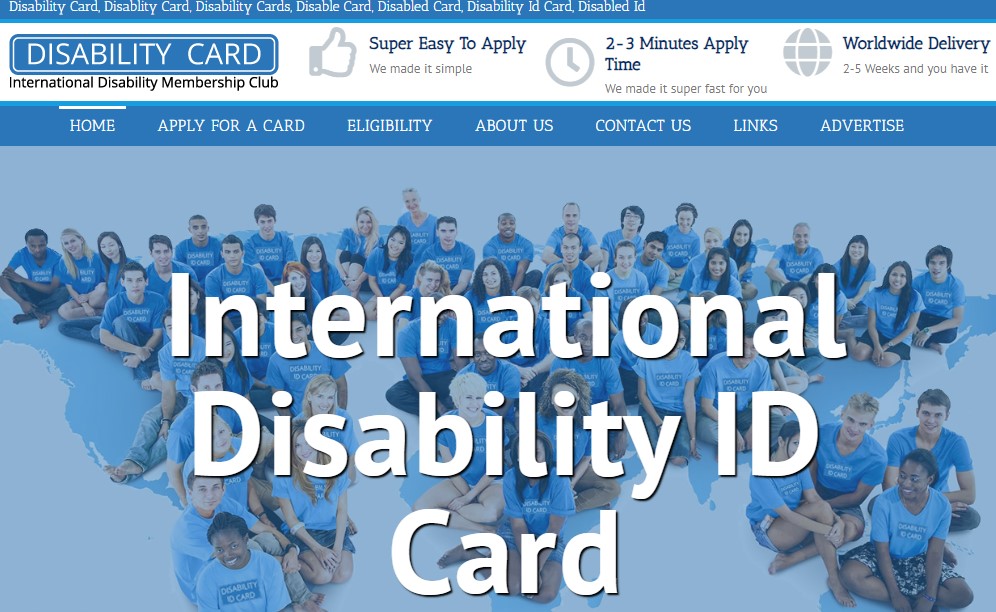
World of Disability Card – The Ultimate 101 Guide
For people with disabilities, a disability card can make life much easier by providing access to accommodations, discounts and services. But how do you obtain a disability card and start taking advantage of the benefits? This comprehensive guide explains everything you need to know about getting and using disability cards.
What is a Disability Card?
A disability card, sometimes called a handicap ID card, is official documentation identifying that the holder has a disability. Disability cards are issued by local, state or federal government agencies upon application and verification of disability status.
The card does not disclose the specifics of the disability, only that the individual qualifies for certain accommodations, discounts and exemptions due to having a disability. The card serves as proof of disability status for various purposes.
Benefits of Having a Disability ID Card
Depending on the issuing agency, a disability ID card can provide the holder with:
- Discounts on goods, services, transportation, entertainment, recreation, etc.
- Waived or reduced fees for government programs
- Priority access to buildings with accommodations like ramps, elevators, accessible restrooms
- Reserved special parking spaces close to building entrances
- The ability to move to the front of lines for services, airport security, entertainment venues, etc.
- Exclusive access to disability services and resources
- Tax benefits
Disability Card Eligibility
Eligibility requirements for disability cards vary somewhat depending on the jurisdiction. But in general, applicants need to:
- Have a qualified disability that meets the criteria
- Provide medical documentation from a licensed professional confirming the presence of the disability
- Be a legal resident of the city/county/state issuing the card
- Pay any application fees
- Renew expired cards periodically to keep them current
Types of Disabilities That Qualify
Physical disabilities, intellectual or developmental disabilities, mental health conditions, and chronic illnesses may qualify an individual for a disability card. The disability must cause significant limitation to one or more major life activities.
Examples of commonly eligible disabilities include blindness, deafness, mobility impairments requiring wheelchair use, autism spectrum disorder, Down syndrome, spinal cord injuries, amputations, mental illnesses such as schizophrenia, seizure disorders, diabetes, multiple sclerosis, PTSD, and HIV/AIDS.
How to Apply for a Disability Card
Follow these steps to obtain a disability card in your area:
- Check the eligibility requirements and documentation needed for a disability ID card issued in your city, county or state.
- Have your licensed doctor, therapist or specialist complete a Certification of Disability form or signed letter confirming your disability status.
- Gather the necessary application documents such as a photo ID, proof of residency, medical records if needed, etc.
- Obtain a disability card application form from the issuing government agency.
- Fill out the disability card application fully and accurately.
- Submit the completed application along with documentation and any required fees to the government agency.
- Wait for the agency to process your application and issue your disability card, which may take several weeks.
- Renew your disability card on the required schedule to keep it up-to-date.
Key Documents Needed to Apply
To avoid delays in processing, make sure you have the following when submitting a disability card application:
- A current government-issued photo ID such as a driver’s license or passport
- Proof of residency such as a utility bill in your name
- An official Certification of Disability form or signed letter from your doctor, therapist or specialist
- Copies of relevant medical records or history documenting your disability (if required)
Using Your Disability ID Card
Once you receive your approved disability card in the mail, keep it in a safe place but have it readily available when needed. Here are some key tips for properly utilizing your disability card:
- Be prepared to also show a valid government-issued photo ID along with your card to verify identity.
- Notify the issuing agency immediately if your card is lost or stolen, and apply for a replacement.
- Check ahead of time which local businesses offer discounts or accommodations for disability card holders, as policies vary.
- Contact government agencies directly about their specific policies on using a disability card for fee waivers, special access, etc.
- Keep your disability card current by submitting renewals and updated paperwork on the schedule required by your area.
Stay Informed on Using Your Card
To maximize the benefits of having a disability card:
- Notify the issuing agency any time your contact details like address or name change.
- Be familiar with the renewal/reapplication requirements and timeline for your card.
- Join local disability advocacy groups to learn about services accepting disability cards.
- Speak up and identify yourself as a card holder to access benefits.
Obtaining a disability card can be extremely beneficial for those managing disabilities. This guide covers everything you need to know to get your card and start utilizing the privileges it provides!